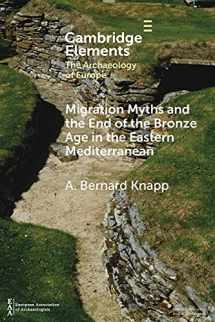
Migration Myths and the End of the Bronze Age in the Eastern Mediterranean (Elements in the Archaeology of Europe)
Book details
Summary
Description
This Element looks critically at migration scenarios proposed for the end of the Bronze Age in the eastern Mediterranean. After presenting some historical background to the development of migration studies, including types and definitions of migration as well as some of its possible material correlates, I consider how we go about studying human mobility and issues regarding 'ethnicity'. There follows a detailed and critical examination of the history of research related to migration and ethnicity in the southern Levant at the end of the Late Bronze Age (ca. 1200 BC), considering both migrationist and anti-migrationist views. I then present and critique recent studies on climatic and related issues, as well as the current state of evidence from palaeogenetics and strontium isotope analyses. The conclusion attempts to look anew at this enigmatic period of transformation and social change, of mobility and connectivity, alongside the hybridised practices of social actors.


We would LOVE it if you could help us and other readers by reviewing the book
Book review



